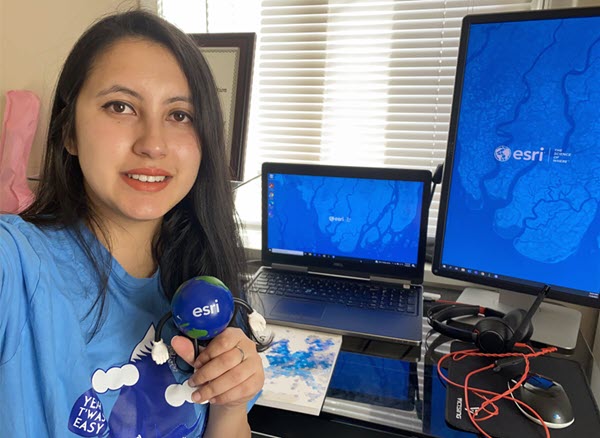Introduction
In the fall of 2020, I was browsing through various internship and full-time opportunities when something interesting caught my eye – Esri’s summer internship program. I immediately dived into the program’s website and checked the requirements. Thinking I would be a good fit, I tailored a fitting resume accompanied by a cover letter and submitted my application. After a few weeks, I was scheduled for an interview with the Spatial Analyst team. During the interview, I was asked about my course content, class projects, GIS experience, my long-term goals, and how it aligned with Esri’s mission. The interview went well, and I was ecstatic to be offered the 2021 summer virtual internship position.
Due to some technical setbacks in my master’s research from the University of Utah, my initial graduation date got pushed to the end of summer instead of spring. I was a bit disappointed with this time shift and was worried that it would cost me my summer internship offer. However, I was elated to learn from the recruiter that they were willing to accommodate my situation and my start date got pushed to the middle of August.

My Projects
Due to my experience and interest in climate change and water resources, I was encouraged to curate a project that encapsulated these sectors and served as the overarching theme of my internship project. After a few days of intense brainstorming sessions and literature review, I decided to work on looking at the status of the public supply water conditions for the San Francisco Bay Area. Throughout the process, I got to learn more about the tools within Spatial Analyst (such as Hydrology, Zonal Statistics, Extraction, and Make Multidimensional Raster Layer tools).
The project was divided into three major groups:
a) Understand the relationship of public supply water withdrawals, land use, and population for 2015.
b) Compare the trends in public water supply withdrawals between 2010 and 2015.
c) Analyze the relationship between precipitation, runoff generation, and storage at the Hetch Hetchy Reservoir Watershed.
The main motivation of the project was to see the trend of public supply water withdrawal in the Bay Area and study its source. The results of the historical analysis obtained from this project can serve as a baseline for comparing future water supply conditions of the region.
I spent most of my internship learning about various geoprocessing tools and analysis techniques for my main project. Besides that, I also got the opportunity to participate in two holistic testing sessions where I tested a couple of QuickStart tutorials, and some map layout features for ArcGIS Pro 2.9. I also learned about performance testing of the “Hillshade” geoprocessing tool in the Spatial Analyst toolbox.
Conclusion
As my internship commenced at the end of the summer, I didn’t get to attend the exciting daily sessions that were spread throughout the week for the summer interns. However, I didn’t feel so left out as I was able to access the webinar recordings from the summer internship that comprised of “Recruiter Roundtable”, “What’s Next Wednesdays” and “Tech Tuesdays”.
As I reflect on the last twelve weeks, I have come to realize that this has been one of the most enriching professional experiences in my life so far. Throughout this journey, I have learned about spatial analysis, various tools within the ArcGIS environments, and the importance of testing and creating effective workflows in software development. Besides analysis, I also learned a great deal about the value of planning, time management, and teamwork, and collaboration, which are necessary to excel in any professional setting. I am grateful to my mentors, co-workers, and the HR team for this wonderful opportunity. This internship program has truly enhanced my understanding of GIS and the immense potential it holds in solving real-world problems.

Article Discussion: